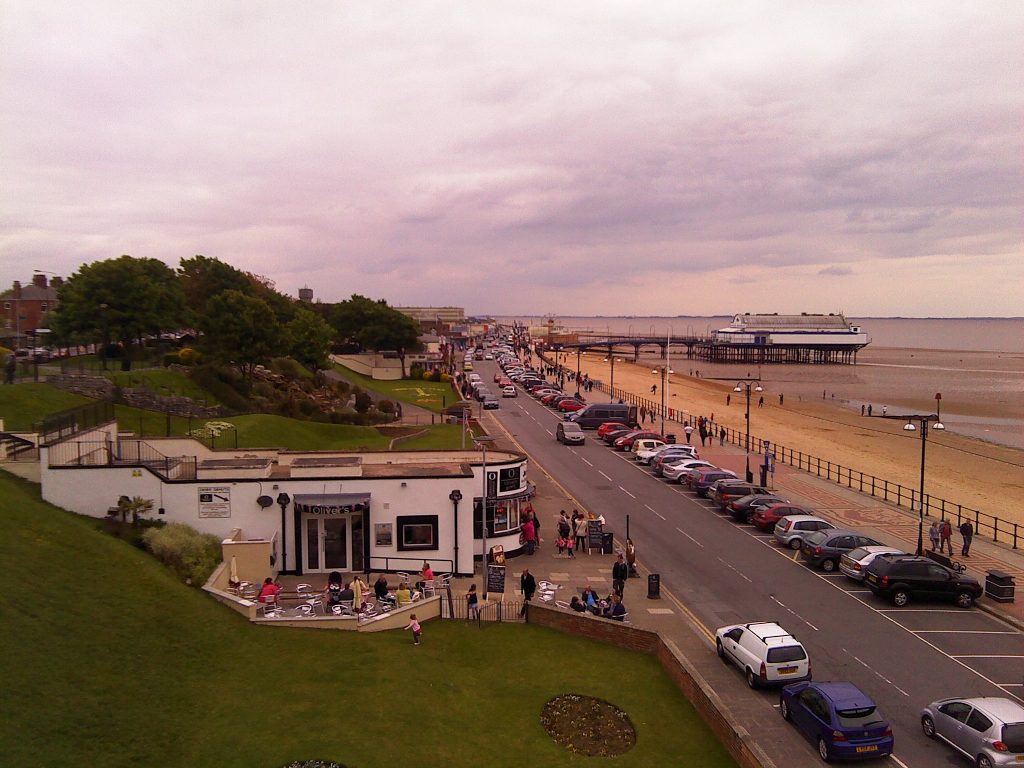
To complete our time-traveller’s journey back in 1900 (see first five blogs of the section) he/she would travel south-east from Immingham to Grimsby.
The photo above shows part of Cleethorpes ‘prom’ and the pier, the mound on the left is/are the ‘regularised sand dunes that were Cleethorpes natural sea defence before commercialization. In fact Cleethorpes itself didn’t really exist before commercialization, early maps showing the inland village of Clee (now overtaken by suburbanisation) south of Grimsby and Thorpe on the coast little more than a few fishermen’s huts, the boats presumably drawn-up on the beach.
Events in life have not often required me to be in Grimsby so some parts are not well known to me. I really like Cleethorpes, particularly the natural lowland costline south of the Leisure Centre to Humberstone Fitties, and for about three years I treated myself to a monthly visit, taking the little train from Barton, Cleethorpes station being beside the ‘prom’, using the same cafe and walking the two miles to Humberstone Fitties an area of fascinating, mostly inter-War, hutments.
Western Grimsby always seemed to me to be a seemingly endless mass of housing, private and local authority, with little to divide one estate from another. I have some acquaintance with the Nunsthorpe local authority housing estate, this standing beside the old A18 leading into Grimsby from the west from Scunthorpe, on to a major rounabout at ‘Nun’s Corner’. None of this housing would have been seen in 1900, except that between Nun’s Corner and Grimsby centre would have been a linear development of Victorian residences, some surviving, and behind to the east Grimsby’s first municipal park, People’s Park, still so named, this surrounded by Victorian villas reminiscent of Pearson Park in Hull but mostly still private residences and generally in good condition.
Many of the by-law housing streets running beside the rail line and near to Grimsby Docks (as then) would have been there by 1900 (best seen from the train windows).
(to be continued)